The Swine Health Information Center, launched in 2015 with Pork Checkoff funding, protects and enhances the health of the US swine herd by minimizing the impact of emerging disease threats through preparedness, coordinated communications, global disease monitoring, analysis of swine health data, and targeted research investments.
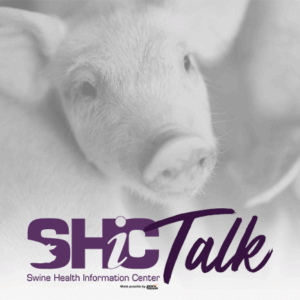
SHIC Executive Director Dr. Megan Niederwerder, Associate Director Dr. Lisa Becton, and outgoing SHIC Board Chair Mark Schwartz join host Barbara Campbell Determan to mark a major milestone. On July 5, 2025, SHIC celebrates 10 years of dedicated efforts to safeguard the health of the US swine herd. Tune in to hear reflections on SHIC’s achievements, progress, and vision for the future.
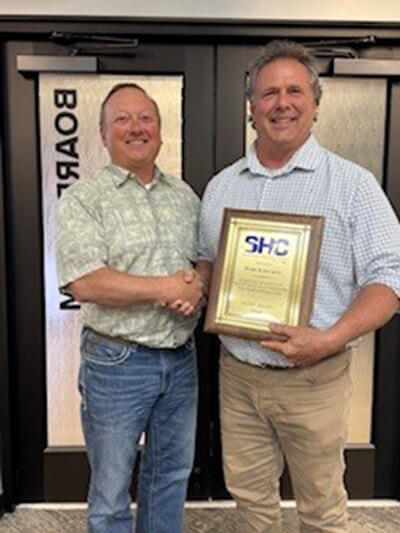
The Swine Health Information Center welcomed two new board members during their meeting June 23-24, 2025. Alayne Johnson of Shady Grove Farms, Churubusco, Indiana, and Sarah Pillen, co-CEO of Pillen Family Farms and DNA Genetics, Columbus, Nebraska, began their terms. Founding board member Mark Schwartz of Schwartz Farms, Sleepy Eye, Minnesota, and Gene Noem of Ames, Iowa, concluded their tenures and were honored for their service.
The SHIC Board of directors also held an election of officers. Paul Ruen, DVM, Fairmont, Minnesota, was chosen to lead the SHIC Board as its chair. Joseph Dykhuis of Dykhuis Farms, Hamilton, Michigan, will assume the role of vice chair, and Kent Bang will continue his service as treasurer. Other board members include veterinarians Seth Krantz, Jay Miller, Jeremy Pittman, and Pete Thomas. Organization staff includes Megan Niederwerder, DVM, PhD, executive director, Lisa Becton, DVM, MS, DACVPM, associate director, and Rhea Schirm, grant and contract administrator.
New Voices on the Board: Forward-Looking Perspectives
The addition of Alayne Johnson and Sarah Pillen brings fresh insights and experience from diverse segments of the pork production industry to the SHIC Board of Directors.
Johnson, with her background as a director on the National Pork Board, brings a deep understanding of the industry’s broader strategic priorities. “My interaction with SHIC began as I served as a director on the National Pork Board. It was then that I learned the history of the organization and the importance of the work that they have done for our industry,” Johnson said. She emphasized SHIC’s critical role, “The research SHIC pursues on behalf of producers allows the industry to have a direct impact on both monitoring emerging diseases across the globe as well as looking for solutions that will reduce the impact on our US producers.”
Johnson lauded SHIC’s established reputation and leadership. “SHIC has built a reputable brand that is recognized amongst those working in the pork industry as well as veterinarians,” she said. “SHIC has tremendous leadership who are passionate about the research mission and dedicated to deploying producer dollars in a meaningful way.” Johnson’s tenure on the Pork Board included chairing the Strategic Planning Task Force, equipping her with comprehensive industry knowledge.
Sarah Pillen, an attorney, brings the perspective of a co-CEO from a prominent family farming operation, underscoring the direct impact of SHIC’s work on producers. “SHIC is a well-respected organization within the pork industry. It has served as a critical resource for our team and enables us to stay updated on emerging diseases and how to best respond to any potential emerging diseases,” Pillen said. She highlighted the practical nature of SHIC’s research, “SHIC’s research projects are focused on providing real tools for the industry to help navigate the viruses we face today, as well as the potential viruses we could face in the future.”
Pillen underscored SHIC’s unique value proposition. “SHIC is unilaterally focused on emerging diseases. It’s a critical focus for our industry given the potential implications on supply and demand both domestically and internationally.” She attributes SHIC’s effectiveness to its strong ties with leading academic institutions, “SHIC has garnered the respect of leading research institutions. As a result, the deliverables from these leading institutions help guide producers’ decisions and enable our industry to be more pro-active against future threats.”
Vision and Enduring Impact of Outgoing Directors
The departure of Mark Schwartz marks the end of an era, as he served as a founding board member since SHIC’s inception in 2015. Schwartz provided a clear articulation of SHIC’s purpose, “The Swine Health Information Center was created in 2015 through the efforts of industry leaders, with funding from the Pork Checkoff, first to direct research and analyze data, monitor emerging diseases around the world and enhance preparedness, with the unwavering mission to protect and enhance the health of the US swine herd, and secondly, to communicate the results of the research, monitoring and analyses to stakeholders.”
Schwartz identified SHIC’s core strengths as its nimbleness and having a very specific focus and mission. He said, “Nimbleness allows SHIC to adjust research priorities to emerging threats as they arise. Having a very specific focus allows us to remain focused on emerging disease threats, whether these are occurring within the US or internationally.”
He recounted the tangible outputs SHIC has provided, including domestic and global disease monitoring reports, viral and bacterial disease matrices, timely webinars on emerging disease, and research reports from over 40 areas of investigation. Schwartz believes SHIC has profoundly influenced the industry, making it more able to respond to an emerging disease than it was 10 years ago.
Reflecting on SHIC’s evolution during his tenure, Schwartz said, “While the mission of SHIC has remained unwavering, the footprint of SHIC has increased through partnering with the Foundation for Food & Agriculture Research, allowing us to leverage the investment of the producers we serve.” Among the many achievements, he expressed particular pride in SHIC directed and funded work in response to emerging situations. These include the work in Vietnam with ASF and with CFIA in Canada, and the response to highly pathogenic avian influenza. His personal contribution, he said, was to, “…always keep in mind that we have been tasked with making decisions and directing the resources of the stakeholders, to protect and enhance the health of the US swine herd.” Schwartz will continue to follow key initiatives like the highly pathogenic avian influenza and wean-to-harvest biosecurity projects, offering a final reflection.
Schwartz served as board chair and was honored for his role with the presentation of a plaque during the recent SHIC Board of Directors meeting.
Noem, a pork producer and retired swine industry professional, has experience in many facets of pork production including working for large operations to contract feeding in his own buildings. A former director and president of the National Pork Board, Gene represented the organization on the SHIC Board of Directors during his tenure.
Sustaining the Mission
As SHIC transitions its board composition and leadership, the consistent theme from both incoming and outgoing members is a steadfast commitment to the organization’s mission. The combined experience and perspectives of the board are poised to strengthen SHIC’s strategic initiatives in disease preparedness, global monitoring, and targeted research, ultimately enhancing the resilience and profitability of the US swine industry.
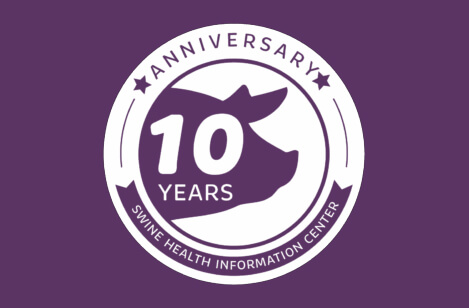
The Swine Health Information Center marks a significant milestone with its 10th anniversary on July 5. Launched in 2015 with funding from the Pork Checkoff, SHIC has dedicated a decade to its core mission: to protect and enhance the health of the US swine herd by minimizing the impact of emerging disease threats. This commitment involves a multifaceted approach encompassing preparedness, coordinated communications, global disease monitoring, analysis of swine health data, and targeted research investments.
From inception, SHIC was envisioned not merely as a reactive entity but as a proactive force, anticipating animal health challenges. The US swine industry, a cornerstone of the nation’s agricultural economy and food supply, faces constant pressure from emerging novel pathogens, re-emerging endemic diseases and transboundary diseases of swine. Recognizing this vulnerability, industry leaders and researchers formulated the idea of a dedicated center focused solely on anticipating and mitigating these threats before they could inflict widespread damage.
“It was the foresight of the National Pork Board to form the Swine Health Information Center after the introduction of porcine epidemic diarrhea virus in 2013,” SHIC Executive Director Dr. Megan Niederwerder said. “Producers were really interested in having an organization focused on looking over the horizon for the next emerging disease risk. We didn’t want to be caught again with a disease introduction that we weren’t prepared for, and so that’s the mission and our continued existence today.”
SHIC’s Pillars
At the heart of SHIC’s enduring success lies its foundational mission, a robust framework that guides every initiative and investment. Each pillar of this mission is critical to the comprehensive defense strategy SHIC employs.
Minimizing the Impact of Emerging Disease Threats: Within this pillar, SHIC focuses on strategies limiting the spread, severity, and economic fallout of new, foreign, or re-emerging diseases. Strategies include rapid identification, effective containment protocols, and swift dissemination of information to enable producers to act decisively. Over the past 10 years, this focus has driven a culture of surveillance and readiness across the industry.
Preparedness: SHIC’s emphasis on preparedness includes active collaboration to develop robust response plans, identify gaps in existing defenses, and through targeted research, ensures the industry has the tools and knowledge to quickly address unforeseen health crises. SHIC’s involvement in preparedness includes participation in scenario planning for high-consequence diseases, facilitating diagnostic readiness, and developing educational materials that empower producers and veterinarians to implement effective biosecurity measures. The focus on preparedness is to ensure when a new threat emerges, the US swine industry is armed with information and tools for rapid response to minimize disease impacts to producers.
Coordinated Communications: Clear, consistent, and timely communication is paramount for disease detection, awareness and education. SHIC acts as a central hub for sharing vital information among producers, veterinarians, researchers, government agencies, and allied industries. This coordinated approach ensures that stakeholders involved in swine health have access to critical information, preventing misinformation and enabling a unified response. Whether it’s an alert about a new global disease trend or an update on research findings, SHIC’s communication channels are designed for maximum impact and clarity, fostering trust and collaboration across the sector.
Global Disease Monitoring: SHIC maintains surveillance for changes in global swine health trends, identifying potential threats as they arise. This involves tracking disease incidence, analyzing transmission patterns, and understanding the characteristics of emerging pathogens internationally. By monitoring global landscapes, SHIC provides an early warning system, allowing the US industry to fortify its defenses and prepare for potential incursions. Maintaining disease surveillance is critical due to a globally interconnected world.
Analysis of Swine Health Data: SHIC invests heavily in collecting, synthesizing, and analyzing swine health data from various sources. This includes diagnostic lab submissions, production records, and epidemiological studies. By identifying patterns, trends, and anomalies in swine health data, SHIC can identify areas of concern, evaluate the effectiveness of control measures, and direct resources to where they are most needed. This data-driven approach ensures that SHIC’s strategies are evidence-based and continuously optimized for maximum efficacy.
Targeted Research Investments: Understanding emerging, re-emerging, and foreign animal diseases, and developing new tools for detection and mitigation requires cutting-edge research. SHIC strategically invests in research projects that directly address critical knowledge gaps and provide practical solutions for the industry. These investments cover a wide range of topic areas, from developing new diagnostics and vaccines to understanding pathogen epidemiology and improving biosecurity practices. By funding targeted research, SHIC accelerates the development of innovations that directly enhance the health and resilience of the US swine herd.
Collaborative Success
SHIC is far from insular in its operations. Partnering with other entities leverages SHIC funding from Pork Checkoff, expands reach, and represents the collaborative view of staff and directors. Recent joint efforts with the Foundation for Food & Agriculture Research have included Japanese encephalitis virus research, the Wean-to-Harvest Biosecurity Research Program, and H5N1 influenza research initiatives.
A quote from FFAR’s 2024 annual report, “In the U.S., where pork is a major industry, the health of the nation’s swine herd is crucial. As the third-largest producer and consumer of pork in the world, the U.S. relies heavily on its swine population, and threats to swine health can harm producers, consumers and the economy. To protect this vital industry, FFAR partnered with the Swine Health Information Center (SHIC) to develop innovative, cost-effective technologies and practices that improve biosecurity, particularly in the critical wean-to-harvest phases of swine production. This partnership has funded 23 projects, many of which have already delivered valuable insights and tools. These findings are transforming the way pork producers and veterinarians manage the health of swine herds, with immediate, practical applications for farms and transportation systems alike.”
SHIC’s mission focus on emerging disease is unique among other livestock industry organizations. “SHIC fulfills a unique need to constantly evaluate emerging disease trends and focus on finding unique solutions to address these needs. The use of multiple reporting programs to monitor and track diseases objectively through the Morrison Swine Health Monitoring Program, the swine disease reporting system, and the global disease reporting system, are unique to our industry. These programs are a cornerstone to many of our swine health actions, because if we aren’t aware of what’s going on in the field, then it makes it very hard for the industry to respond. These disease monitoring systems inform us of research needs and provide alerts for potentially emerging challenges. I think that’s something unique and very valuable,” said SHIC Associate Director Dr. Lisa Becton.
Building a successful organization able to move quickly, react appropriately, and broadly disseminate critical information requires vision, focus, and resiliency. “Among SHIC’s strengths are nimbleness and having a very specific focus and mission. Nimbleness allows SHIC to adjust research priorities to emerging threats as they arise. Having a very specific mission allows us to remain focused on emerging disease threats, whether these are occurring within the US or internationally,” said Mark Schwartz, outgoing SHIC founding board member and chair. “Although there is a long list of SHIC projects that I am proud of, I would say that the work that SHIC directed and funded in response to emerging situations are at the top of my list. These include the work in Vietnam with ASF and with CFIA in Canada, and the response to highly pathogenic avian influenza.”
Telling SHIC’s Story
Sharing SHIC’s work involves a complex assortment of communications tools. This includes the SHIC website, a monthly enewsletter, eblasts, webinars, podcasts, articles shared with industry, events, presentations, interviews and work with media. Each project, research results, program, and disease monitoring report are deployed to stakeholder audiences so SHIC’s work is amplified and reaches those it’s designed to benefit.
“We want to ensure that any of our knowledge of swine health and disease outcomes is communicated back to producers so it can provide value to pork producers, to the US pork industry, and allow for utilization of that information to protect the health of their herd,” Dr. Becton said. “SHIC has both a veterinary and producer audience. We incorporate direct feedback received from swine producers and their veterinarians during active listening sessions into our day-to-day activities and ensure that the information that is generated is always communicated with that audience.”
SHIC Staff Drive Mission
Dr. Paul Sundberg was SHIC’s founding executive director and served in the role until his retirement in December 2023. “The goal of the original board of directors of SHIC was to find that perfect individual to oversee the entity. Someone who was passionate about protecting the North American swine population from an introduction of any foreign animal disease, was respected and extremely well connected with all facets of the industry and had knowledge and experience in swine health and research,” said Daryl Olsen, DVM, AMVC and former SHIC board member and chair.
In April 2022, Dr. Megan Niederwerder joined SHIC as associate director. Upon her hiring, Olsen said, “SHIC continues to deliver beyond expectations to the swine industry. As the scope of our efforts in prevention, preparedness, and response to emerging and potential foreign swine disease issues grows, so does our need for qualified leadership for the organization. Megan will be an outstanding addition to SHIC with her experience, passion, and knowledge.”
When Dr. Sundberg announced his retirement, Dr. Niederwerder was tapped to become executive director and the search for a new associate director culminated in the hiring of Dr. Lisa Becton who began her position with SHIC in January 2024. At the time, Dr. Niederwerder said, “Lisa is an outstanding addition to the SHIC team who brings a wealth of knowledge from directing producer-led swine health initiatives during her tenure at the National Pork Board. Her vast experience will enable her to hit the ground running as the new associate director and immediately start advancing mission-focused objectives to help lead SHIC into the future.”
As SHIC’s effort, reach, and mission continue to grow, the need for an additional staff person became clear in 2024. After a wide search and careful consideration, Rhea Schirm was hired as SHIC’s grant and contract administrator in April 2025. In announcing the position and Schirm’s hiring, Dr. Niederwerder said, “We are thrilled to have Rhea join the SHIC team. Her experience in the pork industry and knowledge of the grant lifecycle will help our organization grow in efficiency.”
Volunteers Inspire and Encourage
Along with staff, SHIC has been guided by industry stakeholders sharing their time, expertise, and passion for the health of the US swine herd. The SHIC Board of Directors consists of nine members; six directors are appointed and three directors are elected. The NPB, National Pork Producers Council (NPPC), and the American Association of Swine Veterinarians (AASV) each appoint two members and three are elected by the appointed directors. The three elected directors must be active pork producers or representatives of producing companies that have an interest in the mission of SHIC. Responsible for SHIC governance, the following have served or are serving on the SHIC Board of Directors:
Matt Anderson, DVM
Kent Bang*
Joseph Dykhuis*
Mark Greenwood
Howard Hill, DVM
Alayne Johnson*
Brett Kaysen, PhD
Seth Krantz, DVM*
Bill Luckey
Jay Miller, DVM*
Gene Noem
Russ Nugent, PhD
Daryl Olsen, DVM
Sarah Pillen*
Jeremy Pittman, DVM*
Paul Ruen, DVM*
Mark Schwartz
Mike Terrill, DVM
Pete Thomas, DVM*
Matthew Turner, DVM
*Current board members
Two working groups also provide stakeholder input into SHIC’s operations: Monitoring and Analysis Working Group and Preparedness and Response Working Group. These groups include practitioners, allied industry partners, pork producers, academic researchers, diagnosticians, federal and state animal health officials, packer/processors, and industry association veterinarians from AASV, NPPC and NPB. Each working group meets regularly to review and select research projects as well as engage in SHIC programming activities.
A Decade of Service, Growth, and Value
Over the past decade, SHIC’s core pillars have evolved over time to address current challenges and strengthened the industry’s response to a dynamic disease landscape. SHIC has played an instrumental role in fostering a proactive mindset within the US pork industry, shifting the paradigm from purely reactive measures to a more anticipatory and prepared stance. The goal for proactive surveillance continues to include prevention of potential outbreaks, safeguarding the livelihoods of producers and ensuring a stable supply of pork for consumers.
The challenges to swine health will continue to change and new diseases will emerge. Coupled with novel disease emergence, the complexities of global trade and travel will demand sustained surveillance and response. As the Swine Health Information Center embarks on its second decade, it does so with a proven track record, a robust mission, and the unwavering support of the US pork industry. SHIC’s dedicated efforts ensure that the health and vitality of the US swine herd remain protected, allowing the industry to thrive and continue its essential contribution to the nation’s food security.
In reviewing SHIC’s first 10 years, gratitude comes to the fore. “We want to thank everyone who has been involved in SHIC activities. Whether that’s board members, board officers, staff, working group chairs, working group members, task force members, all the producers that have supported the organization through the Pork Checkoff – thank you. We are only here because of the individuals who have supported the organization, who helped us carry out our mission over the last 10 years, who helped provide us with input and insight to ensure our activities are directed towards providing producers the most value, and really the service of the industry enabled SHIC to maintain its focus on emerging diseases,” Dr. Niederwerder said. “I offer a big thank you to all of those people who have been involved in SHIC’s formation and existence over the last 10 years.”
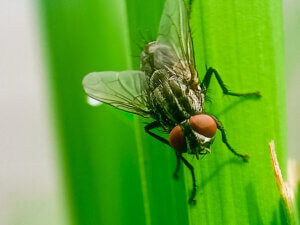
The Swine Health Information Center in collaboration with the American Association of Swine Veterinarians hosted a webinar on June 13, 2025, entitled “Emerging Risk of New World Screwworm (NWS) and Efforts to Prevent Re-introduction into the US.” The webinar had 732 registrants from around the globe, 608 attended live from 18 countries, and it is now available for on demand viewing. The webinar provided the latest information on NWS, including an overview of the parasite, the fly lifecycle, clinical signs of infestation, impact to producers, Texas prevention and preparedness activities, and a status update for NWS in Mexico. To date, NWS has not been identified in the US since it was eradicated from the Florida Keys in 2017.
The identification of NWS in Oaxaca and Veracruz, within 700 miles from the US/Mexico border, raises concern about this potential emerging threat to swine health. Increasing awareness and understanding of this parasitic fly as well as prevention and mitigation steps for NWS infestation help US pork producers protect their herd health.
Presenters offering their expertise included:
Cody Egnor, DVM, veterinary medical officer, United States Department of Agriculture
Nancy Adams, DVM, Texas Animal Health Commission Epidemiology Department
Kathy Simmons, DVM, chief veterinarian, National Cattlemen’s Beef Association
Moisés Vargas-Terán, DVM, international animal health expert consultant for OMSA, FAO, IAEA, WHO, and the IDB
The myiasis caused by New World Screwworm, Cochliomyia hominivorax, is a parasitic fly whose larvae infest and feed on the living tissue of warm-blooded animals, including humans. In his presentation, Dr. Egnor emphasized that, unlike other flies, NWS maggots feed exclusively on living tissue. Female flies lay 200-300 eggs around wounds or natural orifices like the eyes, ears, nose, anus, umbilicus, and genitalia. These eggs hatch within 12 to 24 hours, and the emerging larvae burrow deep into the flesh, tearing at tissue with hook-like mouth parts, leading to severe inflammation and secondary infections. The entire life cycle can be as short as 21 days in tropical climates.
Dr. Egnor highlighted clinical signs of NWS infestations characterized by visible larvae in the wound, often numbering in the hundreds, accompanied by a bloody discharge and foul odor. Affected animals can exhibit depression, reduce feed intake, self-isolate, and show agitated behavior like head shaking. Untreated infestations can be fatal within seven to 14 days, with nearly 100% mortality in newborns with umbilical infestations. NWS is not contagious from animal to animal, but multiple animals in a group can become infested. Multiple infestations in a single wound are common and can attract other blowfly species. While roughly 84% of cases are in cattle, 4% of NWS infestation cases have been identified in swine. Humans can also be infested by NWS. A review of animal husbandry practices such as branding, ear tagging, tick control, wound care, castration, births, and performance of practices seasonally can help prevent infestation.
USDA has actively focused on the use of Sterile Insect Technique (SIT) to reduce and eliminate the flies in affected locations. This method involves the release of sterile flies into the wild population to reduce NWS wild flies’ reproduction and eventually eliminate wild flies from the environment. Prevention activities include robust regulatory controls, active field surveillance for myiasis, sterile flies, and stakeholder engagement. Dr. Egnor stated that NWS is a reportable disease in the US and USDA has resources available for producers to assist in the identification of the fly, how to report a suspect case, and information on USDA’s preparedness activities in the NWS Redbook.
Dr. Simmons provided a historical perspective of NWS in the US and its impact on the cattle industry, stating that NWS caused significant economic losses from the 1930s – 1970s. The US successfully eradicated NWS in 1966, though sporadic outbreaks occurred until the 1970s, with the last US outbreak in 2016 in the Florida Keys. Freedom from NWS provides an estimated $1 billion in economic benefits to US livestock producers and $3.7 billion to the general economy annually. If NWS was identified in the US, eradication would be a significant challenge due to the size of the US cattle herd, speed and distance of cattle movements, and the increased wildlife populations that interface with livestock. Mexico exports, on average, 1.2 million head of cattle to the US each year. The closure of the southern border to cattle, bison, and horses due to NWS in Mexico has affected the livelihood of many US cattle feeders who depend on Mexican cattle to fill their feedyards. This is especially significant due to the lowest numbers since 1951 for the US cattle herd.
Dr. Simmons highlighted the USDA’s efforts to prevent NWS introduction with increased measures initiated on February 1, 2025, to require a comprehensive treatment and inspection process for all cattle entering the US from Mexico to mitigate the risk of NWS. Further protection efforts occurred on May 11, 2025, when US Secretary of Agriculture Brooke Rollins announced a temporary border closure for live cattle, bison, and horses from Mexico. Additional efforts have been focused on the use of SIT which involves the propagation and release of sterile male flies into NWS activity areas, reducing the reproduction rate and causing eventual die-out of the flies. Currently, Panama has the only operating sterile NWS fly production site, producing flies at the rate of 100 million to 117 million sterile flies per week, but many more flies are needed to cover the expanded affected areas. Additional facilities to produce sterile NWS flies and approval of products to combat NWS are urgently needed, per Dr. Simmons.
Dr. Adams stated that the potential impact of NWS in the US would be substantial, with estimated costs to eradicate reaching $1.27 billion, and annual producer and consumer impact near $540 million. Losses attributed to NWS could include increased production costs due to animal deaths, decreased livestock production, and higher needs for veterinary services, medication, insecticides, and labor. The US cattle industry is particularly vulnerable, as it relies on Mexican cattle imports, which have been significantly reduced due to NWS mitigation protocols and border closures affecting cattle.
The Texas Animal Health Commission (TAHC) has developed resources for producers and veterinarians to assist in surveillance and rapid detection of NWS suspect cases. Protocols include detection of maggots deep in living tissues and wounds. Kits have been developed and can be provided for the collection of samples if NWS is suspected. NWS is a reportable disease in the US and veterinarians and producers are instructed to report any suspect cases to the appropriate state or federal animal health officials.
TAHC is focusing on preparedness efforts in collaboration with USDA APHIS and other agencies to refine response plans, develop strike teams, identify potential US sterile fly production facilities, and monitor SIT effectiveness. Outreach materials and training for veterinarians and producers are being developed to enhance awareness, reporting, and management of NWS. Producers are advised to regularly monitor animals, inspect pets and vehicles when traveling from infested areas, keep wounds clean and covered, and use repellents. It is critical not to move suspected infested animals.
Dr. Vargas-Teran reviewed the history of NWS control using SIT between Colombia and Panama, creating a barrier using sterile insects for prevent northern NWS flies’ incursion. A significant change occurred in Panama in April 2022 north of the control barrier, with the significant increase in NWS cases that reinfected the entire country, in 2023. NWS has since spread rapidly through Central America, reaching Costa Rica, Nicaragua, Honduras, Guatemala, El Salvador, and Belize. In July 2024, Mexico implemented an emergency prevention plan to prevent the disease introduction into the country.
However, on November 1, 2024, the first case was detected and confirmed in a quarantine station in Mexico in the Chiapas state, near the Guatemalan border. By May 2025, NWS had spread to seven Mexican states (Chiapas, Tabasco, Campeche, Quintana Roo, Yucatan, Oaxaca, and Veracruz). This prompted the suspension of live cattle, bison, and horse imports through US southern border ports due to the presence of NWS cases. Chiapas has the highest number of active cases with cattle being the primary species impacted.
Dr. Vargas-Teran noted that the response of veterinarians and producers in Mexico focus on modified timing of production practices, such as branding, to reduce the potential for NWS infestation. Affected animals are either treated with topical and/or injectable medications to kill the flies with additional wound management steps as needed. An increased veterinary workforce has been deployed to perform active surveillance in the field for NWS and collection kits for larvae are provided in the number of 150,000. Producer education and outreach are ongoing in the field, especially in areas with active cases. He noted that animals are not the only species affected as there have been at least eight human cases in Mexico and producers should be aware of this potential human health threat.
Presently, the goal of SIT in Mexico is to stop the northward progression of the disease with aggressive fly releases in affected areas and the establishment of a sterile fly barrier at the Tehuantepec Isthmus, to push back the disease to the international border between Panama and Colombia, where the previous sterile fly barrier was operating. It would take approximately eight to 12 months to have additional fly production available for use in Mexico to strengthen the strategy. Other control efforts are focused on animal quarantine and halting illegal animal movements.
For more information, resources are available from the USDA APHIS website on New World Screwworm, the TAHC NWS Fact Sheet, and the Panama-United States Commission for the Eradication and Prevention of Screwworm (COPEG).
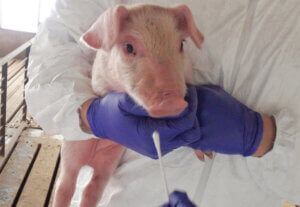
With the goal of determining if porcine astrovirus 4 alone can cause respiratory disease, a collaborative team of investigators from North Carolina State University, USDA Agricultural Research Service, Iowa State University, and University of California Santa Cruz investigated if piglets infected with PoAstV4 exhibited reproducible lesions in the respiratory tract. Funded by the Swine Health Information Center, the study design included infecting PoAstV4 naïve piglets with the virus and characterizing the resulting infection and pathological lesions. Infected piglets shed the virus in nasal secretions, exhibited tracheitis and bronchitis with virus detected in tissues, and developed a productive immune response to infection. Results from this study are the first to confirm that PoAstV4 can be a primary cause of epitheliotropic viral infection in the respiratory tract of piglets.
Find the industry summary for study #23-077 here.
PoAstV4 has frequently been detected in nasal swabs from young pigs exhibiting respiratory disease. Retrospective studies, including an evaluation of 117 IAV negative cases of tracheitis and bronchitis, demonstrated a strong association between PoAstV4 detection in respiratory epitheliotropic viral infection lesions. However, observational associations do not establish causation. Understanding the pathogenesis of PoAstV4 as an emerging virus is crucial for accurate diagnosis, differential considerations, and effective management strategies for respiratory disease in swine.
The study described the use of caesarean-derived colostrum-deprived (CDCD) piglets challenged intratracheally (17 – challenged and 11 negative controls) with PoAstV4 PCR positive tissue homogenate that had been screened by next generation sequencing for the presence of other primary swine pathogens. Nasal swabs were collected to monitor viral shedding, and piglets were necropsied at five- and eight-days post-challenge (DPC) to evaluate gross and microscopic lesions. Viral localization within tissues was confirmed using PoAstV4 in situ hybridization. The immune response was characterized by detecting anti-PoAstV4 IgM and IgG antibodies in serum and quantifying infiltrating lymphocytes (T and B cells) within lesioned airways using immunohistochemistry and digital image analysis software.
PoAstV4 was detected in nasal secretions of challenged piglets as early as two DPC. All challenged piglets were negative for nasal shedding by 14 DPC, with peak shedding occurring earlier in the post-challenge period. Fecal shedding was also observed, suggesting either swallowed respiratory exudates or potential low-level gastrointestinal involvement. Microscopic lesions consistent with epitheliotropic viral infection, specifically tracheitis and bronchitis, were consistently observed in challenged pigs at five and eight DPC. PoAstV4 was successfully localized to the respiratory epithelial cells within these lesioned tissues via ISH, directly linking the virus to the observed pathology.
A robust immune response was mounted against PoAstV4. Both anti-PoAstV4 IgM and IgG antibodies were detected in serum, with IgG levels becoming detectable at 14 DPC and increasing through the study’s end at 21 DPC. Furthermore, significant infiltration of lymphocytes was observed within the lesioned respiratory mucosa of challenged pigs, indicating a cell-mediated immune response. The demonstration of both antibody and cell-mediated immune responses to PoAstV4 is foundational for understanding immunity and potential vaccine development strategies.
This study provides compelling evidence that PoAstV4 is a primary respiratory pathogen capable of causing tracheitis and bronchitis in young, naïve pigs. The reproduction of microscopic lesions, viral shedding patterns, and characterization of the immune response solidify PoAstV4’s role as a direct contributor to respiratory disease in swine. While the reproduced lesions in this controlled setting were not as severe or extensive as some field cases, this is likely influenced by the precise challenge dose (which is difficult to quantify for non-isolatable viruses) and the optimal health conditions of CDCD piglets.
The findings suggest that PoAstV4 should be considered a differential diagnosis for respiratory signs, particularly coughing, in suckling and early nursery pigs, especially in cases where common viral pathogens like IAV are not detected. Future research efforts are critical to isolate PoAstV4 from clinical cases, which will enable more precise challenge studies, evaluation of the virus’s impact on production parameters, and assessment of its role in co-infections with other swine respiratory pathogens.

The 92nd General Session of the World Assembly of Delegates for the World Organisation for Animal Health recently convened from May 25 – May 29, 2025, bringing together international animal health authorities to establish global standards impacting livestock industries worldwide. The US pork industry was well-represented within the US delegation, underscoring the critical role of international collaboration in safeguarding domestic swine health and trade. Delegation members representing the US pork industry included Dr. Megan Niederwerder, executive director, Swine Health Information Center, Dr. Dusty Oedekoven, chief veterinarian, National Pork Board, Dr. Anna Forseth, director of animal health, National Pork Producers Council, and Dr. Liz Wagstrom, consultant, National Pork Producers Council.
The General Session of the World Assembly, comprising delegates from WOAH member countries, convenes at least annually, with the General Session held over five days each May in Paris, France. Delegates are responsible for adopting international standards in animal health, with a strong emphasis on facilitating international trade, electing WOAH’s governing bodies, adopting resolutions pertaining to the control of major animal diseases, examining and approving annual reports, and appointing the Director General of WOAH. Delegates also explore ways WOAH can collaboratively shape a sustainable future for global animal health and welfare.
The General Session’s comprehensive agenda featured an Animal Health Forum on Vaccines and Vaccination. Taking place over the first two days of the General Session, the Forum on Vaccines and Vaccination was structured around vaccine adoption as an outcome of vaccine availability, vaccine access and vaccine demand at both the farm and national level. Plenary sessions also covered the activities of the Wildlife and Antimicrobial Resistance Working Groups, as well as updates from the Terrestrial Animal Health Standards, Aquatic Animal Health Standards, and Biological Standards Commissions.
Given WOAH’s designation as the global authority on animal health, the standards developed and adopted during the General Session directly influence US swine producers through their impact on international trade and disease control strategies. Consequently, having Drs. Niederwerder, Oedekoven, Forseth, and Wagstrom serve as delegation members representing the US viewpoint provides benefits to the domestic swine industry.
A significant focus for all US pork industry representatives was activities and discussions on African swine fever, including their attendance at a special session dedicated to ASFV regionalization and zoning. The Special Session hosted by the USDA (USA), CFIA (Canada), and SAG (Chile) covered the processes and application for ASF regarding regionalization and zoning, the application of zoning during an outbreak to support trade, and the development of zoning protocols. This critical discussion highlighted ongoing efforts to mitigate the spread of ASF and facilitate safe trade in the context of disease outbreaks. In addition, the WOAH ASF vaccine standard was adopted during the meeting and is available for review here. The standards are focused on development and production of safe and effective ASFV vaccines as a part of the strategy to control ASF globally.
The WOAH Terrestrial and Aquatic Animal Health Codes are foundational documents that provide internationally recognized standards for improving animal health and welfare, and veterinary public health. These codes include provisions for safe international trade in animals and animal products. Complementary manuals provide standardized approaches for the diagnosis of diseases listed within these codes. Diseases of particular concern to swine producers, explicitly addressed in the Terrestrial Animal Health Code, include African Swine Fever virus, Classical Swine Fever virus, Porcine Reproductive and Respiratory Syndrome virus, Foot and Mouth Disease virus, Pseudorabies virus, and zoonotic diseases such as Japanese Encephalitis virus.
Further details regarding the 92nd WOAH General Session are available here.
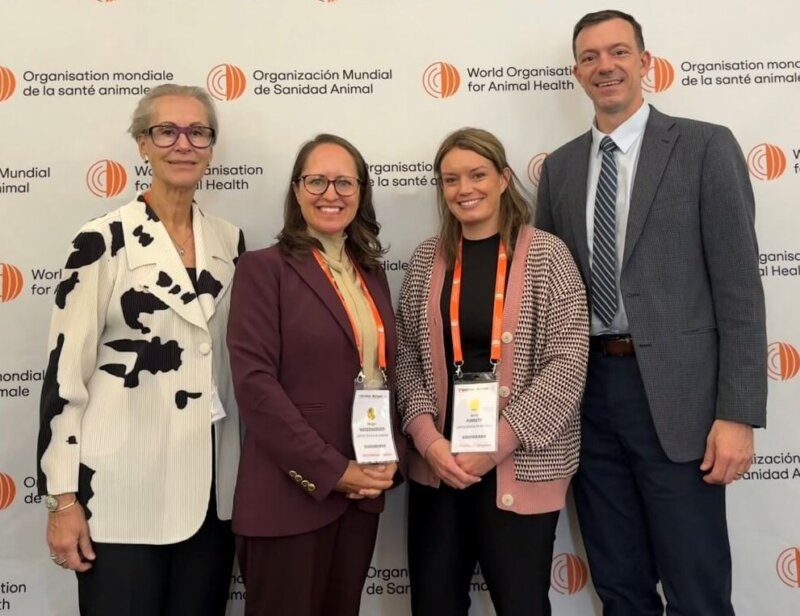
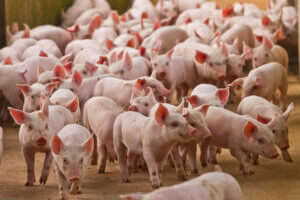
The National Pork Board and National Pork Producers Council are seeking input from producers and other swine industry stakeholders to develop a National Swine Health Strategy. Your response is critical! Participate in a collaborative industry effort to shape the future of swine health.
Complete this short survey online before September 1, 2025.
A producer-led U.S. swine health strategy is an essential part of achieving a larger NPB-led goal to improve the lives of pigs and people. If you have questions about the National Swine Health Strategy or would like to take the survey over the phone, contact the National Pork Board Service Center at 1-800-456-7675.

This month’s Domestic Swine Disease Monitoring Report covers the first detection of PRRSV lineage 1C.2 in North Carolina. The PRRSV case positivity in wean-to-finish remains at 40% in June, which is unusually high for the summer. PRRSV case positivity remains above the expected state-specific baselines in Iowa, Minnesota, South Dakota, and Indiana. Although there is decreased PEDV case positivity across all age categories, the percent positive cases from vehicles and truck washes remains high (17%). PDCoV case positivity is above the state-specific baselines in Missouri, Indiana, Ohio, and North Carolina. Mycoplasma hyopneumoniae case positivity increased in wean-to-finish, but most of the positive cases were deep tracheal swabs and lungs collected to prepare homogenate for sow farm exposure. PCV2 and PCV3 case positivity increased moderately with PCV2 being detected predominantly in finishing sites and PCV3 in sow farms. In the podcast, Nicolai Weber, Danish Agriculture & Food Council, discussed Denmark’s strategy for reducing PRRSV at the national level, PRRSV diagnostic strategies applied in the Danish reduction plan, and how similar PRRSV reduction approaches could be adapted in the US.


PRRS Cumulative Incidence for MSHMP Beginning July 1, 2009
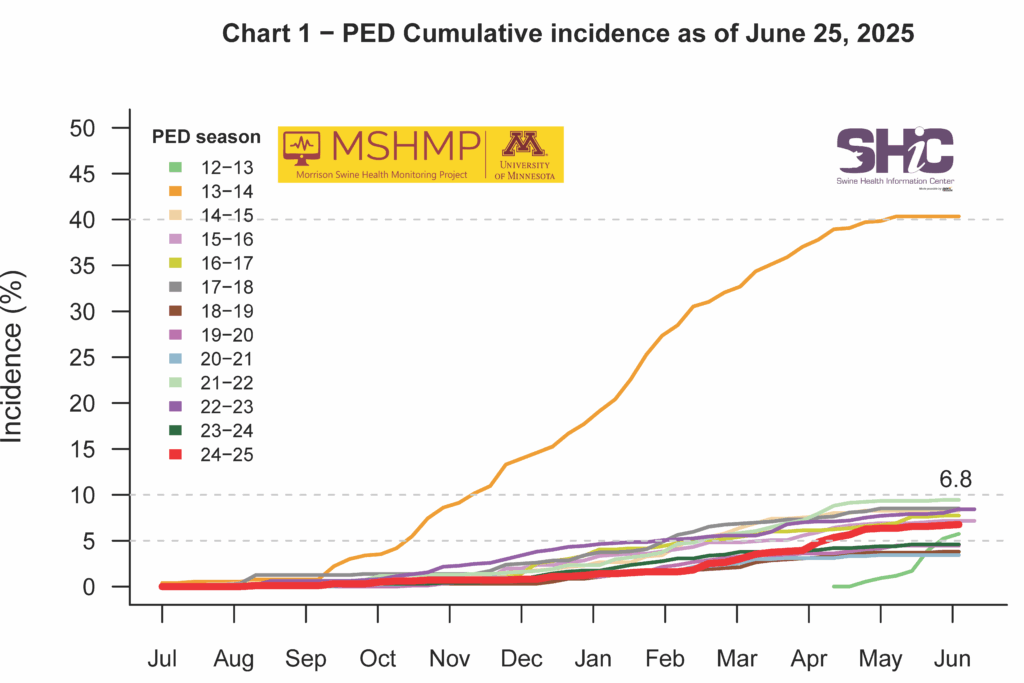
PEDV Cumulative Incidence for MSHMP Beginning May 1, 2013
Copyright 2025 | Swinehealth.org | Website by Heartland Marketing Group